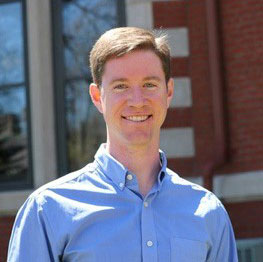Last month we highlighted the profession of physical therapy as part of National Physical Therapy Month. In that discussion, we described physical therapy as a profession focused on assessing and improving human movement in order to maximize our life experiences. Movement is not easy to define and there are countless ways in which we can express ourselves through the way we move. There is no “right” or “wrong”, but movement can be dysfunctional if it disrupts our daily lives. I figured I would highlight ways in which movement may alter and affect our ability to live in the home, perform at work, or live out our enjoyment of recreational activity. Movement dysfunction may be broken down into three categories: developmental, traumatic and acquired.1
As we mature from birth, our bodies and structures will grow and develop at different rates. During puberty, children may develop different movement habits to adapt to their changing leg lengths, arm lengths, and we often suggest that they will “grow into their bodies.” This is not always the case, especially those who are highly active in athletics and repetitive movement based practices that require them to uniquely adapt to their expected demands regardless of their body framework. The pressure of performing in these tasks may not always allow for creating foundational movement baselines and places upon them a higher risk for injury. Some of these altered movement habits may continue as children develop into adults and may continue to plague these individuals until properly addressed by a movement specialist.
The second form of movement dysfunction may occur from trauma such as car accidents, work-related injuries, and falls within the home. Often times, these occurrences will be met with experiences of pain which compromises how we move. We may adapt our movement in order to avoid pain, such as creating a limp or by limiting motion. These compensations may allow us to temporarily continue along with our daily lives, but these new movement habits may continue even after healing has taken place and pain is relieved. At this point, many will consider that they are fully healed and rehabilitated, but these repetitive and altered movement habits may also place the individual at greater risk for further injury. In the worst-case scenario, this limitation in movement due to pain may cause functional decline and future medical complications.
Third, acquired movement dysfunction may affect those who place unnatural activity demands on a normal movement base, or those who perform normal activities on an unnatural movement base.1 In the first example, a tennis player may perform thousands of powerful swings of the racquet in a typical training week from primarily one direction. They may be well-rounded athletes, but the specialized demand may create an imbalanced expectation in one direction of movement and on a specific part of the body. Additionally, someone who is primarily sedentary will place the body in prolonged demanding postures and can present the same problem as the tennis player. Repetitive slumped postures may place an undue demand on postural muscles and may limit movement capability to stand erect and appropriately maintain balance inside the base of support. As per the second example, someone may perform a natural activity such as walking but may be causing injury due to lack of mobility or stability. This would be highlighted by someone with limited structural ankle mobility and the stress caused by joint limitation may lead to pain and inflammation.
In summary, we as humans are able to express ourselves through movement in many different ways. Our ability to move allows us to function and enjoy our lives to the fullest! Although, we may at times not be enjoying activities due to limitation or may be at risk for future injury due to one of the described dysfunctions. The solution to this would be to obtain an evaluation screen from a physical therapist or movement professional to find solutions to our movement limitations, or even better yet, prevent future limitations from happening! An obvious sign indicating the need for a professional assessment is the presence of pain. Although pain is not necessary and the idea of prevention may help you continue loving your life and functioning at your peak.
Along with movement, in the older adult population, physical performance may be an indicator of further limitation in our ability to move and function appropriately in the community. A physical performance screen may be appropriate to determine risk of falls and decline in function which leads to a multitude of health complications. Contact us today to schedule your screen! Stay tuned, as there will be more on this to come in an effort to promote wellness and prevention!
Steven Babcock, PT, DPT
Physical Therapist
Live Your LifeTM
Bringing Physical Therapy & Wellness to You!

Dr. Steven Babcock has a passion for movement and is motivated to facilitate others in their journey towards physical performance goals. He obtained his undergraduate degree at Saint John’s University in 2008 and furthered his education in achieving a Doctorate of Physical Therapy degree from Washington University in St. Louis in 2015.
Dr. Babcock has experience treating a variety of musculoskeletal complaints and utilizes Postural Restoration to help his patients obtain proper joint position required to train and perform at their best. He is a member of the American Physical Therapy Association and the National Strength and Conditioning Association.
As a lifelong enthusiast for exercise, health, and wellness, Dr. Babcock has an infectious care to help others realize the power each individual possesses to take control of their personal health.
References
1Cook G. Movement. Aptos, CA: On Target Publications; 2010.

